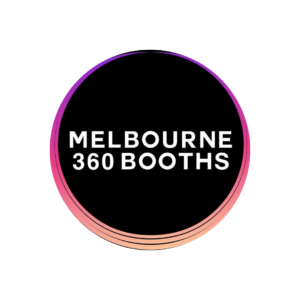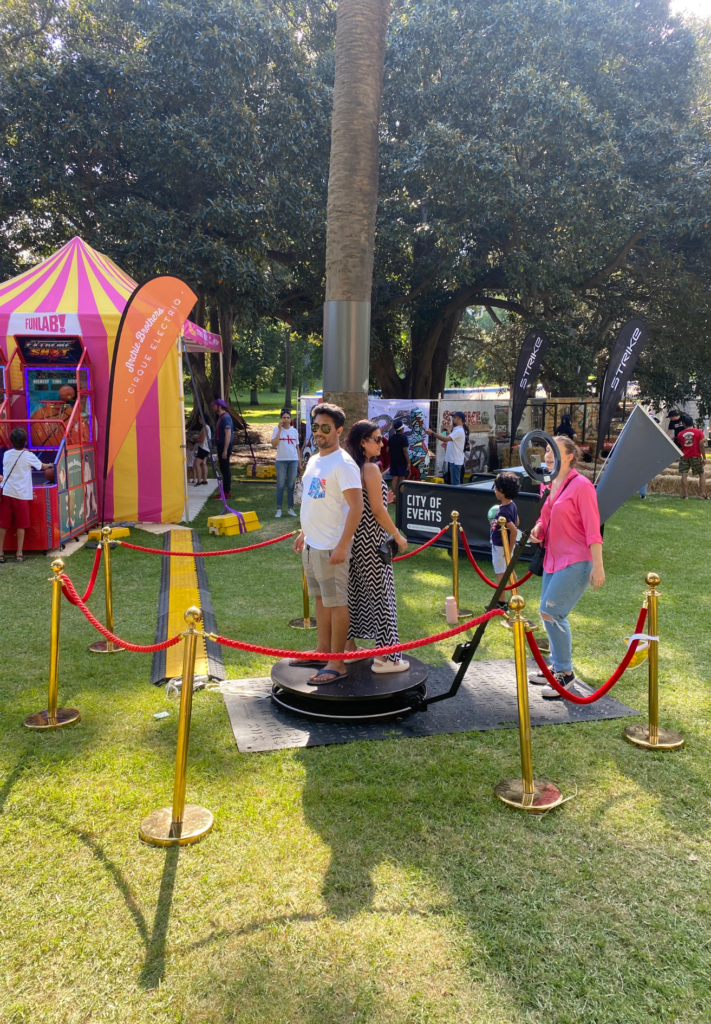A 360 photo booth is a technology that allows users to capture and create immersive 360-degree photos or videos. The technology typically uses a camera rig that can capture a full 360-degree view of the surrounding environment. This camera rig can consist of several cameras mounted in a specific configuration to capture a complete view of the surroundings.

Know More About 360 Photo Booth
Users typically stand in the center of the camera rig and activate the capture process, which usually takes a few seconds. After the capture process is complete, the software processes the captured images or videos to stitch them together into a seamless 360-degree photo or video. The resulting output can be viewed on a computer, smartphone, or virtual reality headset.
360 photo booth technology is often used in marketing and event settings to provide an immersive experience for consumers. For example, it can be used at trade shows or events to showcase products or services. It can also be used at weddings, parties, and other social events to create fun and interactive memories for guests.
Some 360 photo booth setups also include various props, backdrops, and lighting to create a specific ambiance or theme for the captured photos or videos. The technology has become increasingly popular in recent years due to advancements in camera technology and the growing popularity of virtual reality and augmented reality experiences.
Benefits of using a 360 photo booth for marketing
There are several benefits to using a 360 photo booth for marketing purposes. Here are a few:
- Creates a memorable experience: A 360 photo booth can create an immersive experience for consumers that is more memorable than traditional marketing methods. By allowing consumers to interact with the brand or product in a unique and memorable way, it can help create a positive association with the brand.
- Increases engagement: 360 photo booths are highly interactive and can draw consumers in, increasing engagement with the brand or product. By encouraging users to share their photos or videos on social media, it can also help increase the reach of the marketing campaign.
- Provides valuable user-generated content: The photos or videos captured in a 360 photo booth can provide valuable user-generated content that can be used in future marketing campaigns. This can help save costs on content creation and also provide a more authentic representation of the brand or product.
- Offers data collection opportunities: Many 360 photo booths come equipped with software that can collect user data such as email addresses, social media handles, or survey responses. This data can be used to better understand consumer preferences and behaviors, which can inform future marketing strategies.
- Differentiates from competitors: Using a 360 photo booth as part of a marketing campaign can help differentiate a brand from its competitors. By offering a unique and innovative experience, it can help the brand stand out in a crowded marketplace.
Overall, a 360 photo booth can provide a fun and interactive way to engage consumers, generate user-generated content, collect data, and differentiate a brand from its competitors.
Enhanced customer engagement
360 photo booths can enhance customer engagement in several ways. Here are a few:
- Interactive Experience: 360 photo booths provide a highly interactive experience that engages customers and draws them into the brand or product. Users can actively participate in the creation of content, which creates a sense of ownership and investment in the experience.
- Unique and Memorable Experience: The immersive nature of 360 photo booths creates a unique and memorable experience for customers that they are likely to remember for a long time. This positive association can help build brand loyalty and encourage repeat business.
- Social Sharing: 360 photo booths often come equipped with social media sharing capabilities, allowing customers to share their experience with their friends and followers. This can help increase brand awareness and reach a wider audience.
- Personalization: 360 photo booths often come with customization options such as props, backdrops, and filters that customers can use to personalize their experience. This personalization can make the experience more enjoyable and memorable for customers.
- Data Collection: 360 photo booths can be equipped with software that collects user data such as email addresses, social media handles, or survey responses. This data can be used to better understand customer preferences and behaviors, which can inform future marketing strategies.
Overall, 360 photo booths offer a fun and interactive way to engage customers and provide a unique and memorable experience that can help build brand loyalty and increase customer satisfaction.
Gather customer data
360 photo booths can gather customer data in several ways. Here are a few examples:
- Email addresses: Many 360 photo booths offer the option for users to enter their email address before or after taking a photo. This email can then be used to send promotional material or to follow up with the customer after the event.
- Social media handles: Some 360 photo booths allow users to share their photos directly to social media. This can provide the brand with valuable information about the user’s social media presence, which can be used to target social media ads or promotions.
- Surveys: Some 360 photo booths can be programmed to ask users to complete a short survey before or after taking a photo. This can provide the brand with valuable information about the customer’s interests, preferences, and behaviors.
- Demographic information: Depending on the type of event, a 360 photo booth may be able to gather demographic information about the users, such as age, gender, or location. This information can be used to better understand the brand’s target audience and tailor future marketing strategies.
- Analytics: Some 360 photo booths come equipped with analytics software that can track metrics such as the number of users, the length of time spent in the booth, and the most popular photo props or backdrops. This information can be used to optimize the customer experience and improve future marketing strategies.
Overall, 360 photo booths can be a valuable tool for gathering customer data, which can be used to better understand customer preferences and behaviors and inform future marketing strategies. However, it’s important to ensure that customers are aware of how their data will be used and that their privacy is protected.
Key considerations when implementing a 360 photo booth marketing campaign
When implementing a 360 photo booth marketing campaign, there are several key considerations to keep in mind to ensure success. Here are some of the most important ones:
- Define Your Objectives: Start by defining your marketing objectives and what you hope to achieve with the campaign. This will help you determine the type of experience you want to create and what data you need to collect.
- Choose the Right Location: Choosing the right location for your 360 photo booth is critical to its success. Make sure you choose a location where your target audience will be present and where there is enough foot traffic to ensure a high number of participants.
- Provide a Memorable Experience: Make sure the 360 photo booth experience is memorable and engaging for participants. This can be achieved through custom backdrops, props, and filters, or by providing a unique and immersive experience.
- Promote the Campaign: To ensure a high level of participation, it’s important to promote the campaign in advance. Use social media, email marketing, and other channels to generate buzz and encourage participation.
- Collect and Analyze Data: Collect data throughout the campaign to understand how participants are engaging with the 360 photo booth. Analyze this data to improve the experience and to inform future marketing strategies.
- Ensure Privacy and Consent: Make sure participants are aware of how their data will be used and that their privacy is protected. This can be achieved through clear and transparent communication and obtaining consent from participants.
- Measure Success: Finally, measure the success of the campaign against your marketing objectives. Use metrics such as participation rates, social media engagement, and data collected to determine the ROI of the campaign and to inform future marketing strategies.
Overall, implementing a 360 photo booth marketing campaign requires careful planning and execution. By considering these key factors, you can create a successful campaign that engages customers, generates buzz, and drives sales.
Recap of the benefits of using a 360 Photo Booth For Marketing purposes
To recap, using a 360 photo booth for marketing purposes can create a memorable experience for consumers, increase engagement and provide valuable user-generated content, offer data collection opportunities, and differentiate a brand from its competitors. Additionally, 360 photo booths can enhance customer engagement through interactive experiences, social sharing, personalization, and data collection. Finally, 360 photo booths can gather customer data through email addresses, social media handles, surveys, demographic information, and analytics.



